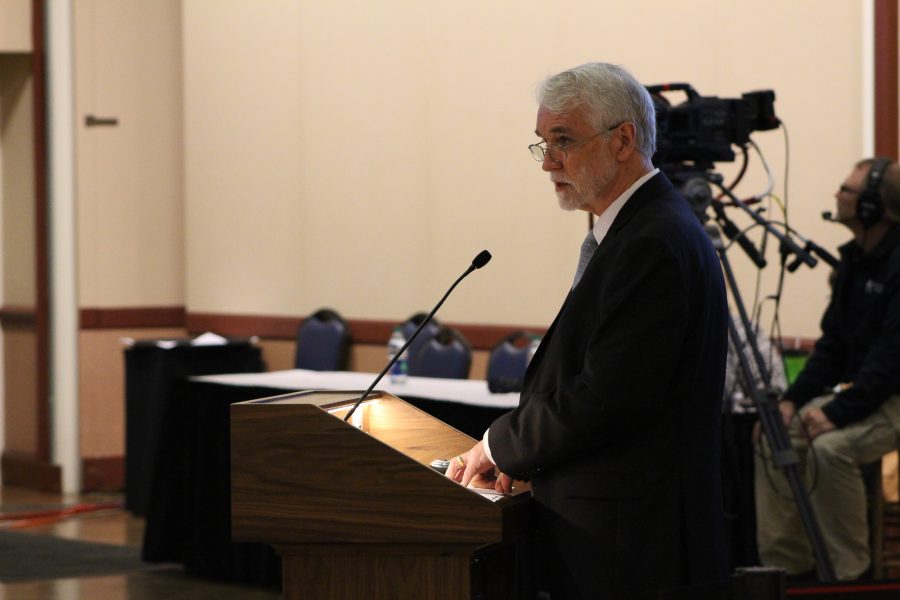University cuts 3 percent of non-instructional staff for budget cuts
UIUC President Timothy Killeen addresses the Board of Trustees during a meeting at the Illini Union on Thursday, Sept. 8, 2016.
October 6, 2016
The University of Illinois system cut 484 non-instructional staff over the last 18 months to save money in the face of the state fiscal crisis, according to a press release.
The cuts represent about a 3 percent decrease of non-instructional staff. Nearly half of the loss, or 202 employees, was in central University administration and the remaining 282 people came from the Chicago, Springfield and Urbana campuses.
President Timothy Killeen estimates this could lead to up to $1.5 million per month in long-term savings, according to the release.
Non-instructional staff includes academic professionals who are charged with high-level administrative responsibilities and civil service personnel at the three campuses, along with administration staff.
The staffing reduction is based on total full-time employees from the February 2015 payroll to the September 2016 payroll, University spokesman Thomas Hardy said.
Get The Daily Illini in your inbox!
The University and other state systems have still not received full funding from the state for fiscal year 2016 or 2017. The state provided $180 million as a stopgap budget in June, or 27 percent of its annual total.
The University hasn’t given any raises for employees for fiscal year 2016 and 2017.
Interim Provost Ed Feser previously said the University is working to try and give raises, but does not want to promise raises that it cannot continue to pay on an annual basis. He said a 2 percent increase costs the campus $12 million a year in additional revenue.
One percent of a merit-based pay program costs the University system $24 million annually.
Despite the staff reductions, the University continues to increase student enrollment. A record number 77,074 on-campus students were enrolled systemwide this year. Once online and off-campus students are counted later this fall, enrollment is expected to hit more than 81,000 students.
“The University is increasing enrollment because of high demand,” Hardy said in an email. “It is reducing administrative staff to be more productive, efficient and effective in a time of financial stress. The administrative savings can be redirected to core mission activities.”
The University system is also reducing utilities and debt refinancing to save money. Energy conservation and moderate weather resulted in $14 million utility savings for fiscal year 2016. By refinancing bond debt used to fund various campus projects, the system saved $4 million.
This is in part thanks to having a good credit score. In September, Moody’s Investor Service, a credit rating agency, said the University has a strong balance sheet and strong student demand.
The investor service said UI has the ability to adjust to ongoing changes in the state, but over time its inability to compete for top-tier faculty and to invest in facilities could hurt the University’s strategic position.
Killeen thanked employees and leaders for their resiliency in helping to work through financial challenges.
“The University’s greatness is demonstrated by its people in times like these, and our people are proving their collective mettle every day,” he said.







